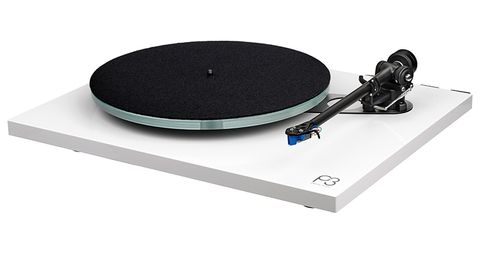Pioneer’s PL-600 turntable was a wonderful turntable that seems to have dropped down the back of the sofa when it was released in 1979. It was a generation ahead of the company’s prior record players, being sleek and futuristic. The PL-200, an excellent quality but simple semi-automatic direct drive turntable, was the top conventional turntable in Pioneer’s 100 series line; the £130 PL-300X included the company’s innovative Stable Hanging Rotor Quartz-PLL DC motor for greater speed stability and precision over time. But probably one of the most essential things it had was coaxial suspension, which it shared with the rest of the line.
The PL-200, PL-300, PL-400, and PL-600 all appeared to be solid slabs, but behind the skin was a well-hidden independently sprung suspended subchassis. Unlike its competitors, the 100-series Pioneers’ plinth top plate, which appeared to be champagne gold coated aluminium, was separate from the turntable base, which was constructed of pressed steel and painted black. It was joined by four springs, which were itself foam-dampened. The platter and tonearm were also mounted on this springy subchassis, so vibrations picked up from the plinth or dustcover had to pass through the springs before reaching the platter and tonearm. It was a fantastic device that worked well when correctly calibrated such that the deck bounced freely and evenly.
It’s one of the smallest quality Japanese direct drives on the market at 456x140x384mm, yet it still weighs over 12kg. It makes the already excellently built Technics look cheap, from its silky tonearm to that weighty 330mm diecast metal platter. The bearing housing is a sturdy alloy casting that encloses a carefully machined spindle, and everything from the optically triggered, non-contact tonearm drive motor to the microswitch regulating the lift-lower cueing motor is of the finest quality. The brushless, slotless linear turntable drive motor is quiet and powerful, with a phase-locked loop quartz circuit that reduces wow and flutter to 0.02 percent WRMS and noise to a claimed -78dB.
The PL-600 possesses a pleasant smoothness and depth while sounding forceful, aggressive, and musical. Strung steel guitar strings, which are adept at capturing leading edges of notes, seem more lacerating than a good belt drive deck, but this is how steel string guitars genuinely sound. In some areas, the deck has a fantastic clarity, which is most noticeable in the midband. It’s also audible in the bottom end, where bass guitar notes have a vice-like bass grip, making even the excellent Michell GyroDec (belt drive) sound loose and sloppy. The music is more energizing; there’s a stronger sense of moving forward rather than merely drifting around. This extends to the treble, with a clarity that’s notably noticeable on ride cymbals.
It’s not the best deck in the world, with a narrower soundstage than ideal and a tonally grey sound thanks to shoddy tonearm wiring. The Pioneer PL-600, on the other hand, has an unflappable character that imbues everything it plays with a sense of solidity — without ever being overbearing or in your face. It makes the deck exceedingly listenable; no matter what music you play on it, this deck puts on a fantastic show.
Many have survived because they are well-built. PL-600s aren’t cheap, but they can be found for anything from £50 and £300. The PL-600 was sold in Japan as the PL-120, and the PL-600X was a whole different turntable in the United States, so make sure you know what you’re getting. Cheaper decks in the series sell for next to nothing; a PL-300X can be obtained for under £100 and still produce excellent sound.
If the deck you’re looking at is droopy and its platter isn’t bouncing up and down like a nodding puppy, it’ll need some surgery to get it back to its best; it’ll need to be stripped, new springs sourced and fitted, and then rebuilt. This is something that amateurs can easily perform, but it isn’t something you should do at your kitchen table when you have fifteen minutes to spare! Any Pioneer PL-100 series can thrill when properly set up with a good cartridge, providing excellent sound for the money.







